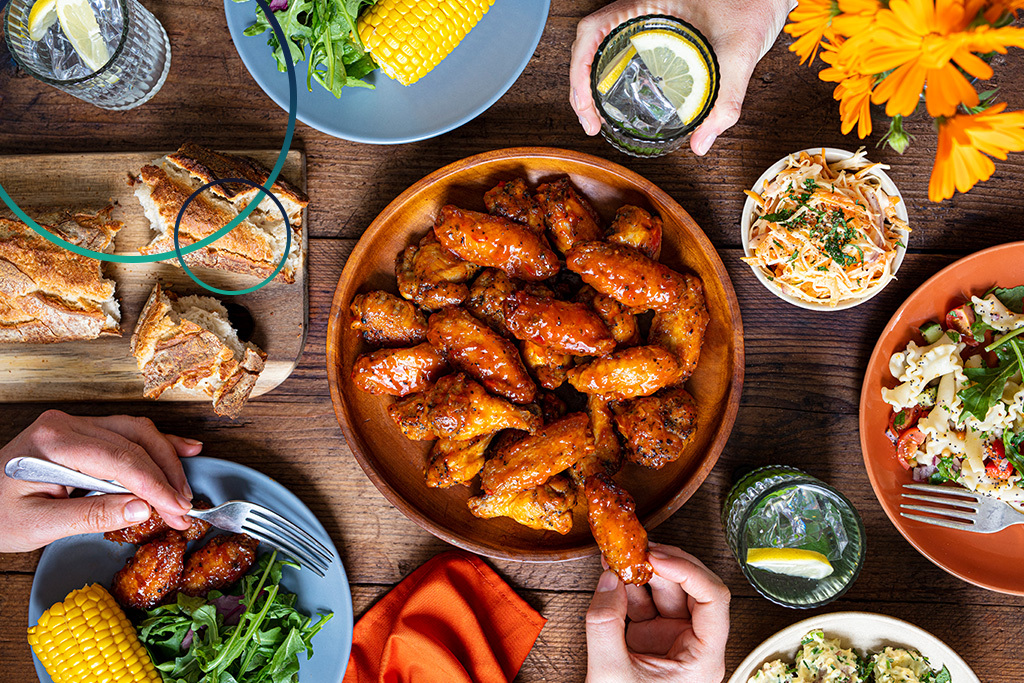Celikoglu Chronicles
Exploring insights and innovations from around the world.
Picture-Perfect Plates: Food That Pops
Discover vibrant recipes and stunning plating tips that make every meal a masterpiece. Dive into food that truly pops!
5 Tips for Styling Picture-Perfect Plates at Home
Creating a visually appealing meal is just as important as the taste, and with these 5 tips for styling picture-perfect plates at home, you can elevate your culinary presentation. Start by selecting the right plates; white dishes often serve as a clean canvas that highlights the colors of your food. Experiment with different shapes, like square or oval plates, to add interest. Next, consider the arrangement of your food. Utilize the rule of thirds — place the main dish off-center on the plate to create a balanced look.
Don't forget to add garnishes; fresh herbs or edible flowers can enhance the visual appeal and add a pop of color. For a finishing touch, drizzle sauces artfully on the plate or use them in dots to create a sophisticated pattern. Finally, ensure proper lighting when taking your photos — natural light works best to bring out the vibrant colors of your food. By following these tips, you can transform your everyday meals into mouth-watering masterpieces that are perfect for sharing on social media.

How to Choose the Right Colors for Food Presentation
When it comes to food presentation, choosing the right colors can elevate a simple dish into a culinary masterpiece. Colors play a crucial role in the way we perceive food, influencing our appetite and expectations. To create visually appealing plates, consider incorporating a variety of hues from the color wheel. For instance, pairing vibrant produce such as bell peppers and beets with earthy greens like spinach or kale can provide a stunning contrast. Additionally, warm tones like reds and oranges often evoke feelings of warmth and comfort, making them ideal for main dishes.
Balance is key when selecting colors for food presentation. Aim for a harmonious combination of colors that complements the dish without overwhelming it. A common technique is to use the 60-30-10 rule, where 60% of the plate is reserved for a dominant color (often the main component), 30% for a secondary color (like a side or garnish), and 10% for an accent color that pops. For example, a grilled chicken breast served with a bed of green asparagus topped with a sprinkle of pomegranate seeds not only appeals to the eyes but also enhances the overall dining experience. Remember, the right colors can entice your guests and make your food more appetizing.
What Makes Food Visually Appealing?
When it comes to culinary presentation, several factors contribute to what makes food visually appealing. First, the use of color plays a crucial role. Vibrant colors can stimulate appetite and capture attention, making dishes more enticing. For instance, a salad adorned with rich greens, bright reds, and sunny yellows is not only nutritious but also aesthetically pleasing. Additionally, the arrangement of ingredients can create dynamic shapes and textures, enhancing the overall visual impact. Texture variation—from creamy sauces to crunchy toppings—adds depth that can draw the eye in and make the dish look more interesting.
Another essential factor is the serving style, which can elevate the perception of the food. Using elegant plating techniques, such as layering ingredients or adding garnishes, can transform an ordinary meal into a remarkable experience. Furthermore, ensuring proper portion sizes contributes to a balanced look on the plate, allowing each component to stand out. To summarize, key elements like color, texture, and serving style all intersect to create a visually appealing dish that not only captivates the eyes but also prepares the palate for a delightful culinary adventure.